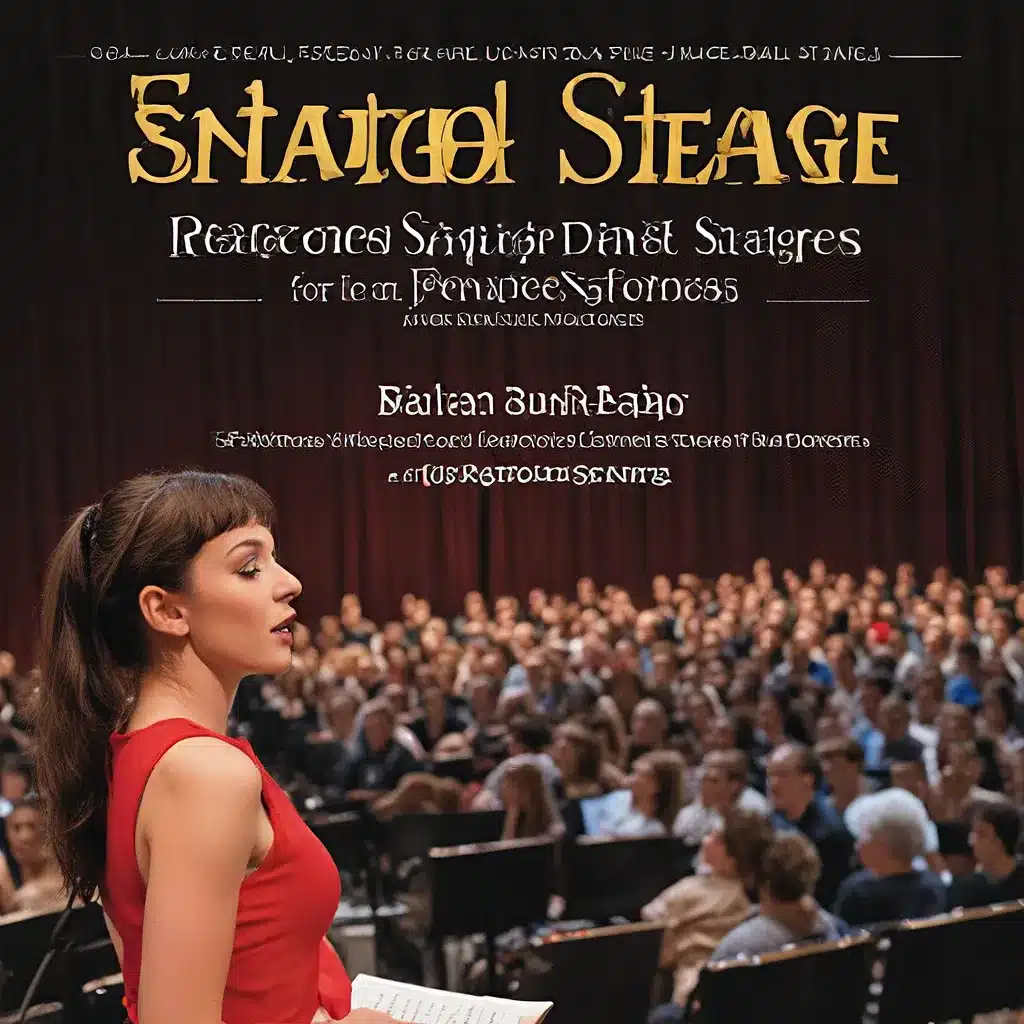
Overcoming Nerves and Awkwardness on Stage
Ah, the jitters of performing live – I know them all too well, my friend. As a singer and rhythm guitarist in a band, I’ve experienced the gut-wrenching anxiety of taking the stage, wondering if my limbs will freeze up and my voice will crack under the pressure. But you know what they say, “The show must go on!” And through trial and error, I’ve discovered some rehearsal strategies that have helped me overcome those pesky stage nerves and amp up my performance presence.
Let’s start with the basics – introducing yourself and your band to the audience. I used to dread this part, fearing that I’d fumble my words or come across as a total awkward turtle. But here’s a little trick I’ve learned: Treat it like you’re chatting with a group of friends. Crack a few lighthearted jokes, share a fun fact or two about the band, and don’t be afraid to inject some personality into your banter. The Musical Theater Center emphasizes the importance of connecting with the audience, and a little friendly rapport can go a long way in making your performance feel more intimate and engaging.
Mastering the Art of Movement
Now, let’s talk about stage presence. In my first gig, I was as stiff as a board, barely moving a muscle throughout the entire performance. It was like I had been glued to the spot, and the audience probably felt as awkward as I did. But after some serious self-reflection (and a bit of constructive criticism from my bandmates), I realized that I needed to break out of my shell and embrace the power of physical expression.
One of the best ways to improve your stage presence is to incorporate simple, purposeful movements into your routine. As this video suggests, things like walking across the stage, making eye contact with the audience, and using your hands to emphasize the emotions of the song can make a world of difference. It’s all about finding a balance between controlled choreography and natural, spontaneous movement.
Another key tip is to practice your performance in front of a mirror or video camera. This allows you to critically analyze your body language and make adjustments as needed. Are your shoulders slouched? Are you fidgeting with your instrument? Taking the time to fine-tune your physical presence can help you feel more confident and comfortable on stage.
Harnessing the Power of Vocal Variety
But it’s not just about your physical presence – the way you use your voice can also have a huge impact on your stage persona. As this video demonstrates, incorporating vocal variety into your performance can help you captivate the audience and convey the emotions of the music more effectively.
Try experimenting with different pacing, volume, and inflection during your rehearsals. Maybe slow down a verse to build tension, or belt out the chorus with unbridled enthusiasm. Don’t be afraid to play with the dynamics and find the sweet spot where your voice truly shines.
And let’s not forget the art of storytelling. By infusing your lyrics with a sense of narrative and emotion, you can create a more immersive and memorable performance. Visualize the scenes you’re describing, and let that imagination come through in the way you deliver the lines.
Embracing the Unexpected
Now, I know what you’re thinking – all of this rehearsal and preparation sounds a bit, well, rigid. But the truth is, the best performances often come when you’re willing to embrace the unexpected and go with the flow.
Remember that time during our first gig when my guitar strap suddenly snapped mid-song? Talk about a heart-stopping moment! But instead of panicking, I quickly adjusted my grip and kept on playing, channeling the adrenaline into an extra burst of energy. The audience loved it, and I ended up feeling more connected to the music and the moment than ever before.
The moral of the story? Don’t be afraid to improvise and let your instincts take over. Sometimes the most memorable moments happen when you least expect them. So, during your rehearsals, try to incorporate some spontaneous elements – a sudden tempo change, a playful interaction with your bandmates, or a spur-of-the-moment vocal riff. These unexpected moments can add an extra layer of excitement and authenticity to your performance.
Putting It All Together
So, there you have it – a few key rehearsal strategies to help you enhance your stage presence and captivate your audience. Remember, the key is to find a balance between preparation and spontaneity, and to always keep your energy and enthusiasm high.
Here’s a quick overview of the tips we’ve covered:
| Rehearsal Strategy | Description |
|---|---|
| Introducing Yourself | Treat it like a casual conversation with friends, and don’t be afraid to inject some personality. |
| Mastering Movement | Incorporate simple, purposeful movements to engage the audience, and practice in front of a mirror or camera. |
| Vocal Variety | Experiment with pacing, volume, and inflection to convey the emotions of the music, and tell a story through your lyrics. |
| Embracing the Unexpected | Don’t be afraid to improvise and let your instincts take over – the best moments often happen when you least expect them. |
At the end of the day, the most important thing is to have fun and let your passion for performance shine through. So, get out there, put these rehearsal strategies to the test, and let your stage presence soar to new heights!

